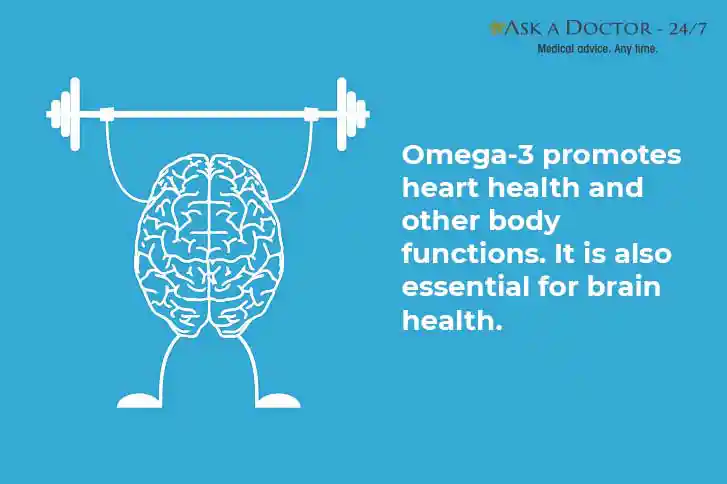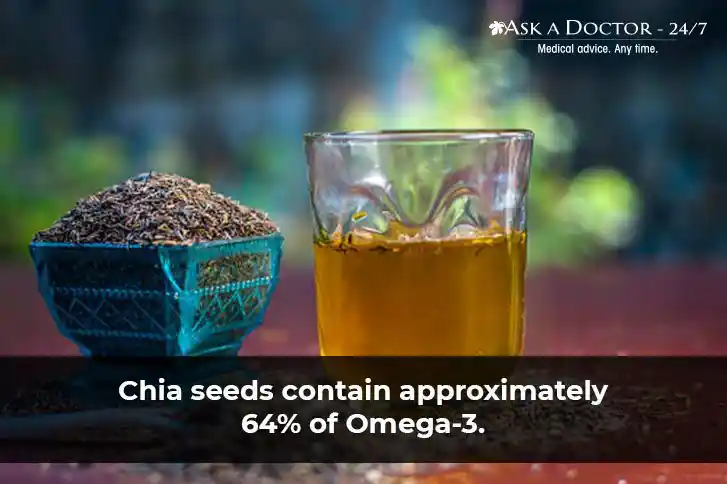5 Sources Of Omega 3 Fatty Acids Vegetarians Must Include In Their Diet
Omega 3 fatty acids belong to the essential class of fatty acids. You must be thinking why they are essential. Well, because human body cannot produce omega 3 on its own; it needs to be obtained from external sources, that is, from the food you eat. These omega 3 fatty acids are abundantly found in marine food-sources such as fishes. So, fish eaters can readily draw their omega 3 nourishment from this marine food source. But if you are a vegetarian, you need be selective to include plant-based omega-3-rich foods in your diet.
Here are 5 best plant-based sources of omega 3 fatty acids, which help complete your daily requirement of this supper food. But before exploring the food items, let us understand why omega3 is considered so important for our health!!
Benefits of omega 3 fatty acid

Omega 3 fatty acids can:
- Reduces the risk of diabetes.
- Keeps heart diseases and many types of cancers at bay
- Helps to manage Rheumatoid arthritis (a condition characterized by chronic pain, swelling, stiffness, and loss of functions in the joints).
- Essential for brain development in children.
- Decreases the risk of Alzheimer’s disease (a brain disorder characterized by progressive and irreversible loss of memory and thinking ability), and other cognitive problems.
In general, for a healthy adult, it is advisable to take 250-500 mg of omega 3 in a day. If you don’t eat enough omega 3, you may develop rough and scaly skin, weak nails, hair problems (dry and dull hair, and dandruff), painful and stiff joints, allergy, and poor concentration or poor memory, along with all the above mentioned risk factors
5 Sources of Omega 3 Fatty Acids Vegetarians
Here are the 5 best omega-3-rich foods of plant origin that you may consider including in your diet to attain optimum health benefits:
1. Chia Seeds

It is obtained from a flowering plant native to Mexico and Central America. It is a superb source of omega-3 fatty acids with approximately 64% of these nutrients in it. A teaspoon of chia seeds contains around 720 mg of omega 3 fatty acids.
2. Flax seeds

Flax seeds are available in 2 varieties: brown and yellow. They are a good source of omega 3, containing 39 - 60% of ALA. Flax seeds are sold as whole, ground/milled, or roasted and as flax seed oil (obtained from processed seeds). Flax seed oil has higher ALA content than ground or whole seeds. One tablespoon of flax seed oil provides about 7.3 grams of omega 3 fatty acids.
3. Walnut

It is unarguably a rich source of omega 3 fatty acid. Walnut contains about 9,080 mg of ALA per 100 grams. English walnut is richer in ALA content than black walnut.
4. Brussels sprouts

Cooked Brussels sprouts are an excellent source of omega 3 fatty acids. Eating half-cup of cooked Brussels sprouts will give you as much as 135 mg of omega 3. So, including Brussels sprouts in your diet is certainly a good idea, since other than omega 3, it is also a rich source of vitamins C and K.
5. Hemp seeds

Another good option to help you meet your omega 3 requirement. These seeds contain about 6,000 mg of ALA. So, you may consider sprinkling some hemp seeds on top of yogurt or smoothies to enjoy omega 3 benefits. The seeds are also processed to obtain hemp seed oil which is higher in ALA content (22g of ALA per 100 g oil).
Takeaway

Consider using omega-3-rich oils for cooking to boost omega 3 content in your meal. Oils that are considered a good source of omega 3 are soybean oil, flaxseed oil, canola oil, olive oil, mustard oil, and groundnut oil. You may also opt for a plant-based supplement such as seaweed to meet your omega 3 needs.
To know more about omega-3 fatty acids, its benefits or any related concern, you can talk to a Nutritionist online now!
Ask a Specialist
Recent Questions


